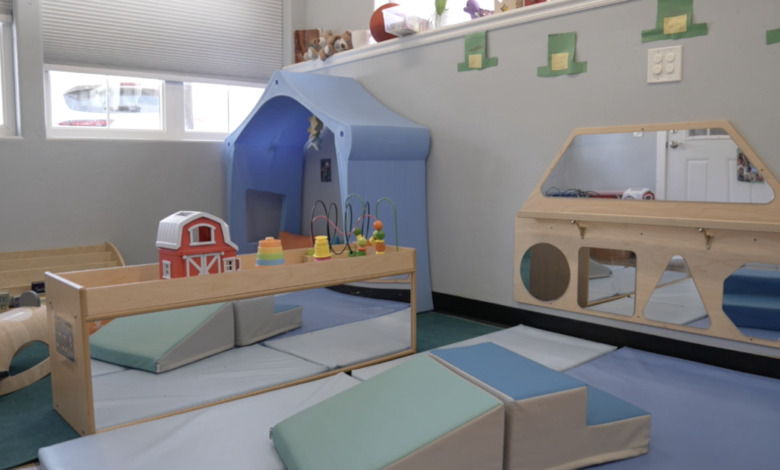
There is a national child care crisis, and programs are looking for ways to help alleviate some of the issues families are facing when trying to secure child care.
Some parents are needing to wait between nine and 12 months to secure a spot on a waiting list. To help solve this problem, programs are turning towards education for refugees and immigrants to add them into the workforce.
“As refugees and immigrants come into our economy, we want them to enter into jobs right way,” said Deborah Young, the co-founder of Pamoja Early Childhood Education. “There are 27,000 teachers that are missing, so this is a great match. We have a huge talent force, and we have a need for them.”
The Pamoja Early Childhood Education workforce program is made up of refugees and immigrants from all over the world to serve as a pipeline for new early childhood educators.
Fatima Jafari, who is from Afghanistan, is in the program.
“For two years, I have studied early childhood education, and I am working as a teacher in the center,” Jafari said. “The program is so important for all the women in my community. They come into the United States, and they need to learn to communicate with the children and how to live in the United States in a new environment. They also need to learn to grow their kids in a new country.”
According to Child care Aware of America research, it shows that nearly 9,000 daycares closed in 37 states between 2019 and 2021. While there are also less day cares, child care center costs increased across the country at an average rate of 41%.
For this reason, Pamoja Early Childhood is utilizing refugees and immigrants by not only giving them the education to start a new life in this country but to help decrease the childcare worker shortage and promote diverse people in the industry.
“We need childcare, and we don’t have enough childcare. We don’t have enough childcare workers, mostly because we do not give professional wages or living wages even,” Young said. “Really investing in our refugees and our immigrants to get higher education, to get the credentials and knowledge and get into the workforce, they’re contributing in one way or another to our society, let’s get them to contribute in ways that creates the whole increase in well-being for everybody in our communities.”
According to the CDC, 94% of childcare workers are female and 40% of those are people of color.
“Right now, almost two years ago, I started the study of the children,” Jafari said. “One of my children is a little bit delayed, but I just want to learn a lot about the behavior and learn about growing the brain for him. Also, I want to help others who have children like me, and I can help them.”
“We want childcare workers to speak the same language and look the same as the child,” Young said. “We want child identity to really be confident in who they are who their family are and what their background and historical context are. And most of the background of teachers and leadership positions look like me.”
The developers of this program believe that bringing in women of color who speak multiple languages can help provide more options for child care to the country and overcome cultural differences while also closing the work shortage gap.








